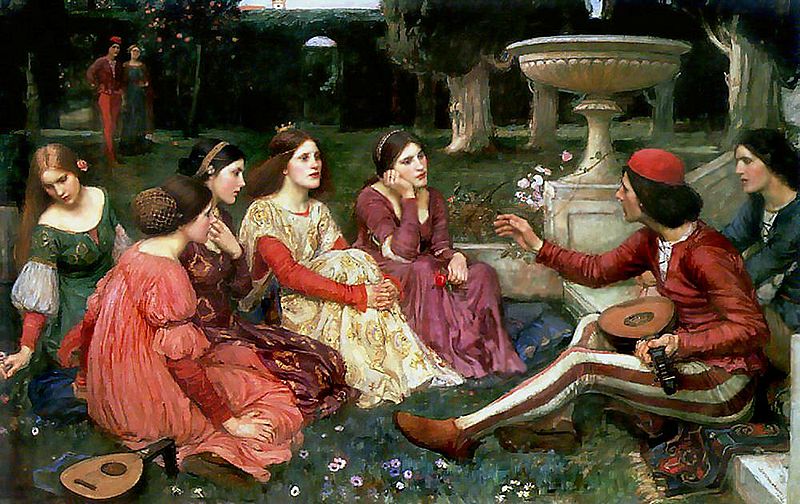


In 1334 an epidemic which would eventually kill two-thirds of China's inhabitants struck the northeastern Chinese province of Hopei, claiming up to 90% of the population - some 5,000,000 people. Carried along trade routes, the "Black Death," as it would soon be called, began to work its way west, striking India, Syria, and Mesopotamia.
In 1346, the Plague came to Kaffa, a Genoese cathedral city and a port central to the successful Genoese trade industry located on the Crimean Peninsula of the Black Sea. The Tartar forces of Kipchak khan Janibeg, backed by Venetian forces - competitors of the Genoese - had laid siege to Kaffa in hopes of removing the Genoese from one of the cornerstones of Europe's defense against Eastern attack and Genoa's dominance of east-west trade. Kaffa was helpless, barely able to sustain even the crudest living conditions. Finding its chief means of supplies cut off, Kaffa spent the next year watching itself decline into a hopeless state.
But then, in 1347, to the Italians' delight, their opponents began to die off at an alarming rate - Janibeg's army was overcome by the Plague. Janibeg had no choice but to call off his siege, but not until he performed one last act of warfare against Genoa. Using the catapults designed to throw boulders and fireballs over the walls of fortified cities like Kaffa, Janibeg launched the Plague infested corpses of his dead men into the city. The Italians quickly dumped these bodies back into the sea, but the damage was done. Due to the squalid conditions forced upon Kaffa by the siege, it was ripe for the quick desolation of the Plague.
Hoping to escape the quickly spreading disease, four Genoese ships, thought to be untainted, departed from Kaffa. They sailed home to Italy, thus bringing the plague to Europe. (BoccaccioWeb)
Figures for the death toll vary widely by area and from source to source as new research and discoveries come to light. It killed an estimated 75 million–200 million people in the 14th century. (Wikipedia)
7 Women
Pampinea
Filomena
Neifile
Fiammetta
Elissa
Lauretta
Emilia
3 Men
Panfilo
Filostrato
Dioneo
Disguise / gender reversal /Deception
Love / Courtly Love
Fortune
Ingenuity / Intelligence / Wit
Cruelty
Death
The Plague as both literally as an historic event and figuratively as a moral/ethical condition
Religion
Sex
Also, the lack or perversion of any of the above